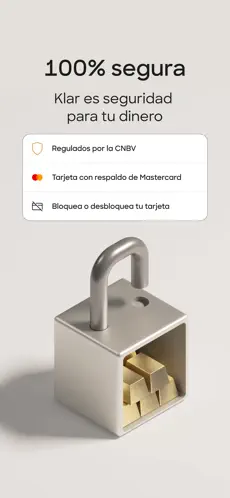Participating in initial public offerings has become more accessible with the rise of digital investment platforms. An IPO Market App provides investors with a structured way to track offerings, review details, and apply without complexity. For individuals interested in understanding the public market, these platforms simplify the process while improving access to information. Tracking an Upcoming IPO through a single interface helps investors stay informed and organized.
An IPO Market App is especially useful for those who want clarity around public offerings without relying on multiple sources. With real-time updates and centralized data, investors can review each Upcoming IPO with better understanding. This approach supports informed decision-making and reduces confusion often associated with the IPO process.
Understanding the Role of an IPO Market App
An IPO Market App is designed to assist investors throughout the IPO journey, from discovery to application. It presents essential information in a structured format that is easy to follow.
Centralized IPO Information
Instead of searching across different platforms, an IPO Market App gathers relevant details in one place. Information related to pricing, timelines, and allocation status is displayed clearly. This allows investors to evaluate each Upcoming IPO efficiently.
Easy Access for New Investors
For those entering the public market for the first time, an IPO Market App simplifies complex terms and procedures. By presenting data in a straightforward manner, it reduces entry barriers and supports learning.
How IPO Market Apps Support IPO Research
Research plays a key role in IPO participation. An IPO Market App helps users review and compare offerings without unnecessary effort.
Clear Offer Details
Each Upcoming IPO is typically presented with essential facts such as issue size, timelines, and objectives. This structured presentation helps investors compare options logically.
Historical Reference and Tracking
An IPO Market App often allows users to view past offerings for reference. This historical context supports better understanding of market behavior related to IPOs.
Tracking Upcoming IPO Opportunities
Keeping track of new offerings is essential for timely participation. An IPO Market App helps investors stay aware of every Upcoming IPO without missing important dates.
Notifications and Updates
Timely updates related to application windows and allotment schedules help investors plan their actions. An IPO Market App reduces the risk of overlooking an Upcoming IPO due to delayed information.
Calendar-Based Planning
With schedules clearly listed, users can plan funds and applications in advance. This structured planning is particularly useful when multiple Upcoming IPO opportunities are available at the same time.
Application Process Through an IPO Market App
Applying for an IPO involves several steps, which are made easier through digital platforms.
Step-by-Step Guidance
An IPO Market App typically guides users through each stage of the application. This structured flow reduces errors and improves confidence, especially for new participants.
Transparency in Status Tracking
After applying, investors can track the status of their application. Updates related to allotment and listing are visible within the IPO Market App, keeping the process transparent.
Benefits of Using an IPO Market App
Using an IPO Market App offers several advantages for investors seeking clarity and efficiency.
Simplified Decision-Making
With all data available in one place, investors can focus on analysis rather than searching for information. Reviewing each Upcoming IPO becomes more systematic.
Time Efficiency
Digital access saves time by reducing paperwork and manual follow-ups. An IPO Market App ensures that essential actions can be completed quickly.
Improved Organization
Tracking multiple applications is easier when all details are stored within the IPO Market App. This organization helps investors maintain better records.
Common Considerations Before Applying for an IPO
While an IPO Market App provides access and information, investors should consider certain factors before applying.
Understanding Market Risk
Each Upcoming IPO carries market-related risks. Reviewing available data carefully helps set realistic expectations.
Financial Planning
Investors should ensure that IPO participation aligns with their broader financial plans. An IPO Market App supports this by offering clear timelines and investment requirements.
Long-Term Perspective
IPO participation should be viewed as part of a long-term strategy. Evaluating each Upcoming IPO with patience and discipline supports better outcomes.
IPO Market App for Informed Investing
An IPO Market App does more than provide access. It encourages informed participation by organizing information and simplifying processes.
Learning Through Consistency
Repeated use of an IPO Market App helps investors become familiar with market patterns. Over time, reviewing each Upcoming IPO becomes more intuitive.
Supporting Responsible Participation
By offering clear information and structured steps, an IPO Market App helps users avoid impulsive decisions. This supports a more thoughtful investment approach.
Who Can Benefit From an IPO Market App
Different types of investors can benefit from using an IPO Market App.
First-Time IPO Participants
Beginners often find value in guided processes and simplified data presentation.
Active Market Followers
Investors who regularly track an Upcoming IPO can benefit from timely updates and centralized information.
Long-Term Planners
Those focused on structured investing can use an IPO Market App to integrate IPO participation into their broader plans.
Conclusion:
An IPO Market App plays an important role in making public market participation more approachable and organized. By centralizing information, simplifying applications, and providing timely updates, it supports informed decision-making. Tracking each Upcoming IPO becomes easier when details are presented clearly within a single platform.
For investors seeking clarity and structure, an IPO Market App offers a practical solution. When used responsibly, it helps users review each Upcoming IPO with confidence and consistency. As part of a disciplined investment approach, an IPO Market App supports better planning and a clearer understanding of the IPO process.





